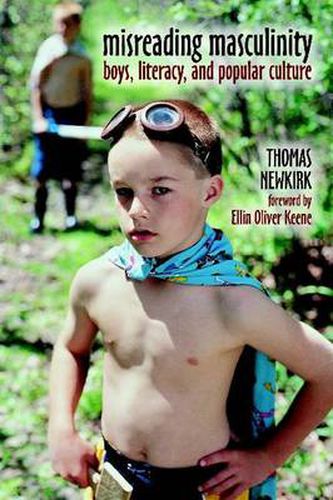Readings Newsletter
Become a Readings Member to make your shopping experience even easier.
Sign in or sign up for free!
You’re not far away from qualifying for FREE standard shipping within Australia
You’ve qualified for FREE standard shipping within Australia
The cart is loading…






In this book Thomas Newkirk takes an up-close and personal look at elementary boys and their relationship to sports, movies, video games, and other venues of popular culture. He sees these media not as enemies of literacy, but as resources for literacy. Through a series of extraordinary interviews, Newkirk listens to young boys, and girls, who describe the pleasure they take in popular culture. They explain the ways in which they use visual narratives in their writing. They even defend their use of violence in their work. Newkirk disproves the simplistic stereotype of boys who are primed to imitate the violence they see. He shows that, rather than mimic, boys most often transform, recombine, and participate in story lines, and resist, mock, and discern the unreality of icons of popular culture.
Using a mixture of memoir, research project, cultural analysis, and critique of published findings, Newkirk encourages schools to ask questions about what counts as literacy in boys and what doesn’t, to allow in their literacy programs boys’ diverse tastes, values, and learning styles. In other words, if we want boys to join the literacy club, then we have to invite them in with genres of their own choosing.
$9.00 standard shipping within Australia
FREE standard shipping within Australia for orders over $100.00
Express & International shipping calculated at checkout
In this book Thomas Newkirk takes an up-close and personal look at elementary boys and their relationship to sports, movies, video games, and other venues of popular culture. He sees these media not as enemies of literacy, but as resources for literacy. Through a series of extraordinary interviews, Newkirk listens to young boys, and girls, who describe the pleasure they take in popular culture. They explain the ways in which they use visual narratives in their writing. They even defend their use of violence in their work. Newkirk disproves the simplistic stereotype of boys who are primed to imitate the violence they see. He shows that, rather than mimic, boys most often transform, recombine, and participate in story lines, and resist, mock, and discern the unreality of icons of popular culture.
Using a mixture of memoir, research project, cultural analysis, and critique of published findings, Newkirk encourages schools to ask questions about what counts as literacy in boys and what doesn’t, to allow in their literacy programs boys’ diverse tastes, values, and learning styles. In other words, if we want boys to join the literacy club, then we have to invite them in with genres of their own choosing.